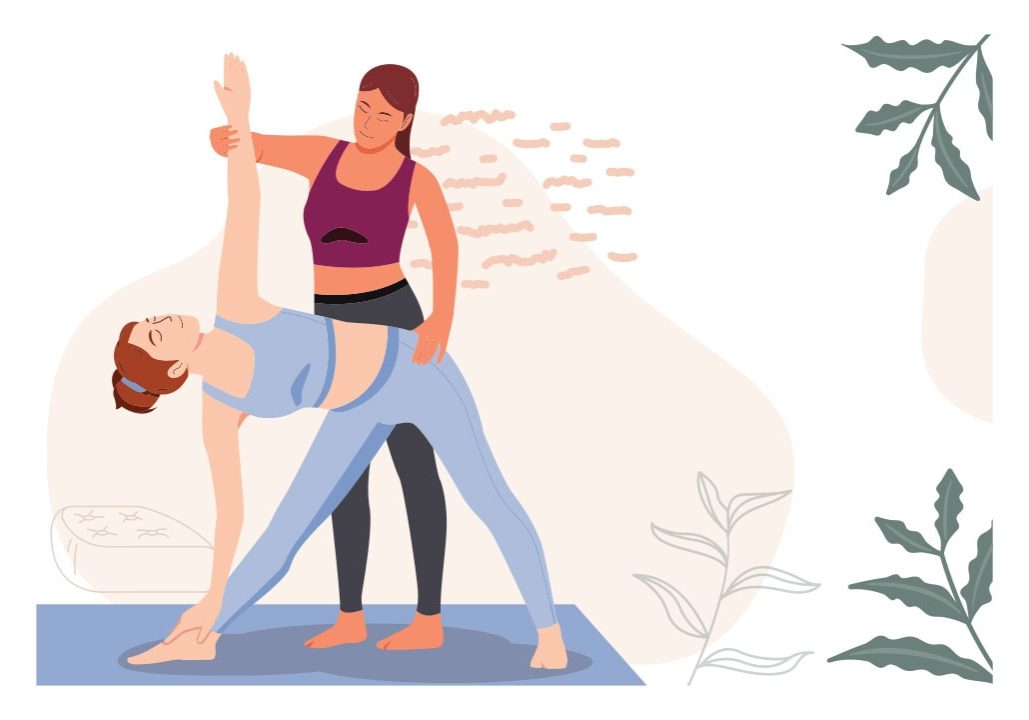
Adjusting with Consent
Why yoga teachers should never assume consent is a given. By Sarah Highfield
Reading time: 3 minutes
Yoga is a personal practice of self-awareness and self-discovery, so it is important to do it in a safe and comfortable space. People come to yoga for many reasons including de-stressing at the end of a long day, connecting with their inner self, creating a sense of peace in their life and to boost feelings of happiness.
When it comes to hands-on yoga adjustments and assists, these can divide students and be polarising. Some students love them and find them warm, nurturing, and helpful; others avoid them, finding them too personal and quite frankly, an unwelcome intrusion.
Human touch can be potent, and it is not always welcome.
In most positive settings, human touch fosters feelings of happiness and security. Research has even shown how it can reduce heart rate and blood pressure, and ultimately calm our nerve centres. However, even with the best intentions, this is not always the case.
Yoga students come from all types of backgrounds, carrying a lifetime of past experiences. Yoga teachers can never know the complete history of each student, and there is a chance that a well-meaning touch could make someone feel vulnerable, anxious, or even unsafe.
Students who have experienced some form of trauma, particularly physical or sexual abuse, often still carry that trauma within their bodies. Therefore, unwanted, or unexpected touch can potentially trigger a flurry of painful and even overwhelming emotions.
Furthermore, the subtle power dynamic between yoga teacher and student should also be accounted for; having a teacher in a position of power touch a student could lead to feelings of weakness and violation. This reinforcement of power dynamics can set back trauma survivors, especially if a large part of their recovery is about reclaiming power and control of their bodies and life.
Other scenarios where touch is unwanted could include students who are on the autism spectrum, have cultural reasons, or who have sensory hypersensitivity, anxiety disorders or obsessive-compulsive disorders, which are all hidden unless disclosed.
Never be afraid to opt out of hands-on adjustments and assists.
As a yoga student, never be afraid to let your teacher know before the class that you do not want to be touched. Some teachers may even place yoga consent cards next to the mats, so you can pick a side that suits you. Your teacher will respect your decision and personal space.
Remember, practicing yoga should never leave you feeling distressed or that your personal space has been disregarded.
Sarah Highfield is a yoga teacher, writer, OM cover model and frequent contributor. Visit: yogagise.com or connect on Instagram @Yogagise




